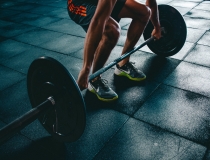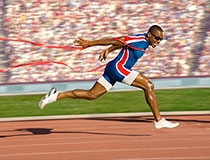Platelet-rich plasma or PRP is an innovative outpatient treatment that promotes healing and growth in injured joints, ligaments, tendons and muscles. It stimulates the body’s natural processes to treat conditions affecting athletes and elderly individuals, such as muscle and tendon injuries, fractures, arthritis and more.
But while the therapy can be finished in less than two hours, there are precautions patients must take to ensure the therapy’s effectiveness. If you are asking yourself: Can you exercise after PRP injections? What does the recovery timeline look like, and how long can you return to your sports or activities after PRP? We’ll answer these questions in the blog below.
PRP Treatment — An Overview
PRP injection is an outpatient procedure wherein the platelet-rich plasma is administered into the area to be treated. Medical providers typically use ultrasound to insert the needle as accurately as possible.
Depending on your orthopedic condition, you may be recommended to receive three injections over 3 to 6 weeks.
Can you exercise after PRP injections?
The quick answer is no, at least not immediately.
After the plasma-rich platelets are injected into your joints, they won’t take effect immediately. They need time to rebuild damaged tissues and speed up your body’s recovery. Any exercise after PRP injection therapy makes it hard for the platelets to attach to the tissues easily, slowing down the healing process.
Frequently Asked Questions About PRP Recovery
How long after PRP can I exercise?
Any kind of exercise after PRP injection must be avoided for at least two weeks after the procedure, as this can impact the injection’s efficacy and even cause complications. You can return to light workouts after 14 days with your medical provider’s approval, but more intense exercises will have to wait until after four weeks of your PRP injections.
Can I walk after PRP injection?
After the PRP injection, your orthopedic doctor may immobilize the treated joint using a sling or a walking boot. If you are having your knee, foot or ankle treated, you may also be advised to use crutches to walk.
How long after PRP can I run?
Usually, patients are given the go signal to resume their day-to-day and sports activities at full intensity around two months after the procedure. You may still experience soreness after participating in strenuous activities, but it should go away within 24 hours.
Why does it take that long to exercise?
Exercises that put a lot of stress on the treated joints keep the platelets from reaching the damaged tissues and doing what they’re supposed to do. Consequently, this extends the time needed to heal the body and may even render the therapy useless.
Persisting and returning to your sports or activity earlier may seem harmless, but impatience will only cause pain and make it harder for your recovery.
PRP Recovery Timeline
You may be able to leave home right after your PRP injection, but this does not mean that you can return to your usual activities immediately. Here’s a general outline of what you can expect after your platelet-rich plasma therapy.
Phase 1 (0-3 Days Post Procedure)
All patients are recommended a complete rest on the day of their procedure. Then, limited use of the treated area is advised for the next two days to allow the joint to absorb the platelets properly.
During this phase, you may also need to wear immobilization devices. Slings or walking boots help protect the affected joint while minimizing movement in the area.
Phase 2 (3-14 Days Post Procedure)
After the first three days and until the second week, workout regimens are usually limited to basic exercises. You may be allowed by your orthopedic doctor to ease yourself into light workouts like basic yoga and weight-bearing exercises as tolerated.
However, any activity that compresses and strains the injected joint must still be avoided during this time.
Phase 3 (14 Days to 6-9 Weeks Post Procedure)
This is usually when it’s safe for you to begin lifting, stretching, cardio and other similar workouts. Your medical provider may also guide you through therapeutic exercises to help you achieve a full range of motion and regain strength and balance.
Still, paying attention to your body and avoiding activities that cause pain are crucial in this stage. Carefully increasing your workout routine’s intensity helps you regain your performance while continuously allowing the plasma to work its wonders inside your body.
Phase 4 (Around 6-8 weeks Post Procedure)
You may be allowed to return to your usual activities two months after your procedure. And while soreness in the treated joint can still happen during this time, it usually goes away within 24 hours.
It’s safer for you to perform sports and regular workouts at this stage, but easing into them slowly and avoiding overexerting yourself are still necessary.
Consult Experts Who Help You Get on the Road to Recovery Quickly
Platelet-rich plasma or PRP treatments are a quick yet effective way to address common orthopedic conditions like acute injuries and osteoarthritis. While you can go home right after your procedure, it’s still crucial that you avoid intense physical activities during the first few days. Resting your body allows the plasma to attach to the damaged tissues properly and rebuild them faster.
More importantly, remember that the healing and recovery process takes time. Being patient with your body and following the recommended timeline for exercise after PRP injection will surely help you get the most out of the therapy.
If your injury or orthopedic condition keeps you from enjoying the things you love to do, the experts at Chicago Cell Therapy & Regenerative Medicine are here to help. We specialize in safe and innovative stem cell therapies that have helped athletes recover from their sports injuries and return to the court confidently. We’d love to do the same for you — get in touch today to learn more about our regenerative procedures.


 Thanks a lot for getting my hip right. Looking forward to a full recovery and a great season. Thanks again for everything.
Thanks a lot for getting my hip right. Looking forward to a full recovery and a great season. Thanks again for everything.










